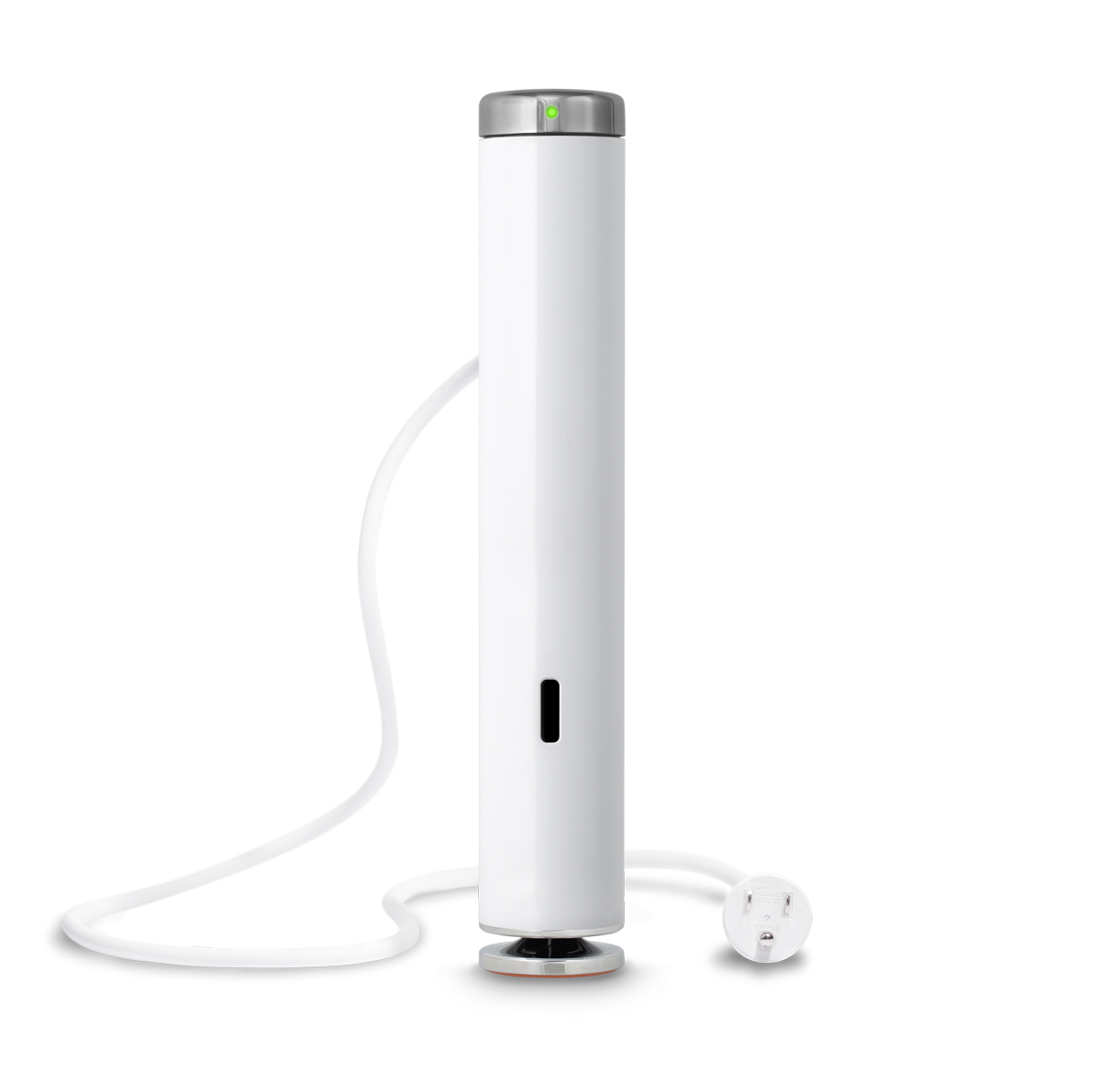Learn from my experiences.
I have some more observations about cooking proteins using the sous vide method. Here they are in no particular order.
You really ought to own a vacuum sealer.
Since Sous-Vide means "under vacuum" this type of cooking is more about the bag than the bath. The zip-lock/displacement method works well, but the added advantage of a vacuum sealer is totally worth the $80 you'll spend on it. Having a food saver allows you to buy in bulk or at a better quality and store it in your fridge/freezer for longer without spoilage. Costco sells a large pork loin (not the tenderloin) for less than $20. From this I can cut two 1# roasts and 11 pork chops. Bag in various quantities and I can cook pork for weeks. Salmon fillets, especially the farm raised ones, run large and I can get at least 10 portions from that. Preseason and bag. The thicker ones are for main dishes and the thin ones for punching up a salad.
Seasonings in the bag should be light.
When seasoning food before the vacuum you should use a light hand. The reason is that if cooked in the bag the seasoning (particularly salt) has nowhere to go and so it goes into your food. I recently seasoned a whole fillet of salmon as I would for oven or stove-top cooking and bagged it up. When I used the water bath to cook 'em they were much saltier than I thought they should be. Why? Well, on the stove-top or oven some of the seasoning comes off as fat is melted out of the food. In the bag the fat may still come out but the solution of fat and salt come to equilibrium with your food due to the magic of osmosis.There isn't a reason not to buy the latest immersion pumps.
I have tried all of the SV techniques listed in my first SV article. The cooler and stove-top methods are good but require you to keep monitoring temperature. The external thermostat is OK, but if anything goes wrong with the placement of its probe you can easily exceed the preset temperature for awhile and the food will be overcooked. Plus you have to move the bags around on long cooks so the water can circulate.
Once I got my Anova Sous Vide Immersion Circulator I was in heaven. Efficient heating, water circulation, cool looks, and precision control led to total confidence. Recently Amazon.com had a "Prime Sale" and was selling the latest Anova Culinary Precision Cooker for $139. I bought one just 'cuz. Although it has an 800W heating element (1000W in the previous model) it is more adjustable and has better electronics -- including Bluetooth so you can control it with your phone or tablet. Please wait for a sale and buy one.Chill unused food quickly and reheat with the water bath.
If you cook food SV that you are not going to sear and eat right away, please use an ice water bath to quickly get your food through the danger zone (45F-140F) before storing in the fridge or freezer. One of the downsides to vacuum bagging is that any bacteria on the surface of the meat can become distributed throughout. This is why knowing your safe combination of time/temp is so important. But if you didn't succeed in killing all of the bacteria it can multiply while your food is cooling off in the fridge. Take the extra time to give your food a quick trip below 45F and be sure to reheat completely following the time/temp guidelines.Salting at the right level helps meat retain juice.
Everyone from the guys at ChefSteps to Alton Brown celebrate the brining process. Adding the correct amount of salt to the bag can actually help food retain some of its natural moisture. Use the weights/amounts suggested by the "equilibrium brining" technique.


























